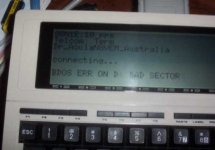Interesting. I had no idea there were so many other options.
A couple of us were playing around putting TRS-80 M100 laptops (not PC-compatible) on the 'net for computer-to-computer connections, file transfer and a BBS; we tried most of the options and ultimately liked com2tcp best:
http://com0com.sourceforge.net/doc/UsingCom0com.pdf
Note that this is an open sourceforge project, not to be confused with the semi-commercial program by the same name at Astrogeek.
The only thing that doesn't seem to work while connecting over tcpser is downloading files. Granted, I've only tried it on one BBS so far, so maybe it's a problem on their end, but any Zmodem connection I make errors out after a while.
Sometimes ymodem works a little better, but this is probably a flow control issue, the only real problem with RS-232 over TCP/IP.
Normally asynchronous RS-232 communication is one character at a time, using control lines (hardware handshaking) or special control codes (XON/XOFF handshaking) for the receiver to tell the sender to pause for a moment while the receiver processes the data; a few characters may still get sent before the sender reacts and stops transmitting, and then it waits for the signal to start again.
Data sent over the network is sent in packets which could be as short as 1 character which would be hugely inefficient considering the overhead, or as long as hundreds or over a thousand characters; once the sender sends that thousand byte packet it's gone, any signal from the receiver to pause isn't going to do anything, and the receiver may well choke on the packet if it can't put it away fast enough. As you've noticed, if you slow down the transmission rate it will be better, but that's the rate between the receiver and the 'modem' and even if the bridge stops sending on the RS-232 side you will still have characters piling up on the internet side which will probably eventually overflow or choke.
Ideally you'd want the bridge itself to stop passing data to the receiver when it gets the 'pause' signal, buffer any incoming data until it gets the go ahead, and also tell the remote transmitter to pause until it gets a go ahead.
I'd really like to get my hands on one of those LanTronix boxes though.
Watch eBay and if you're lucky you can sometimes pick one up for around $10-$20; they are the best and most flexible solution IMO.

